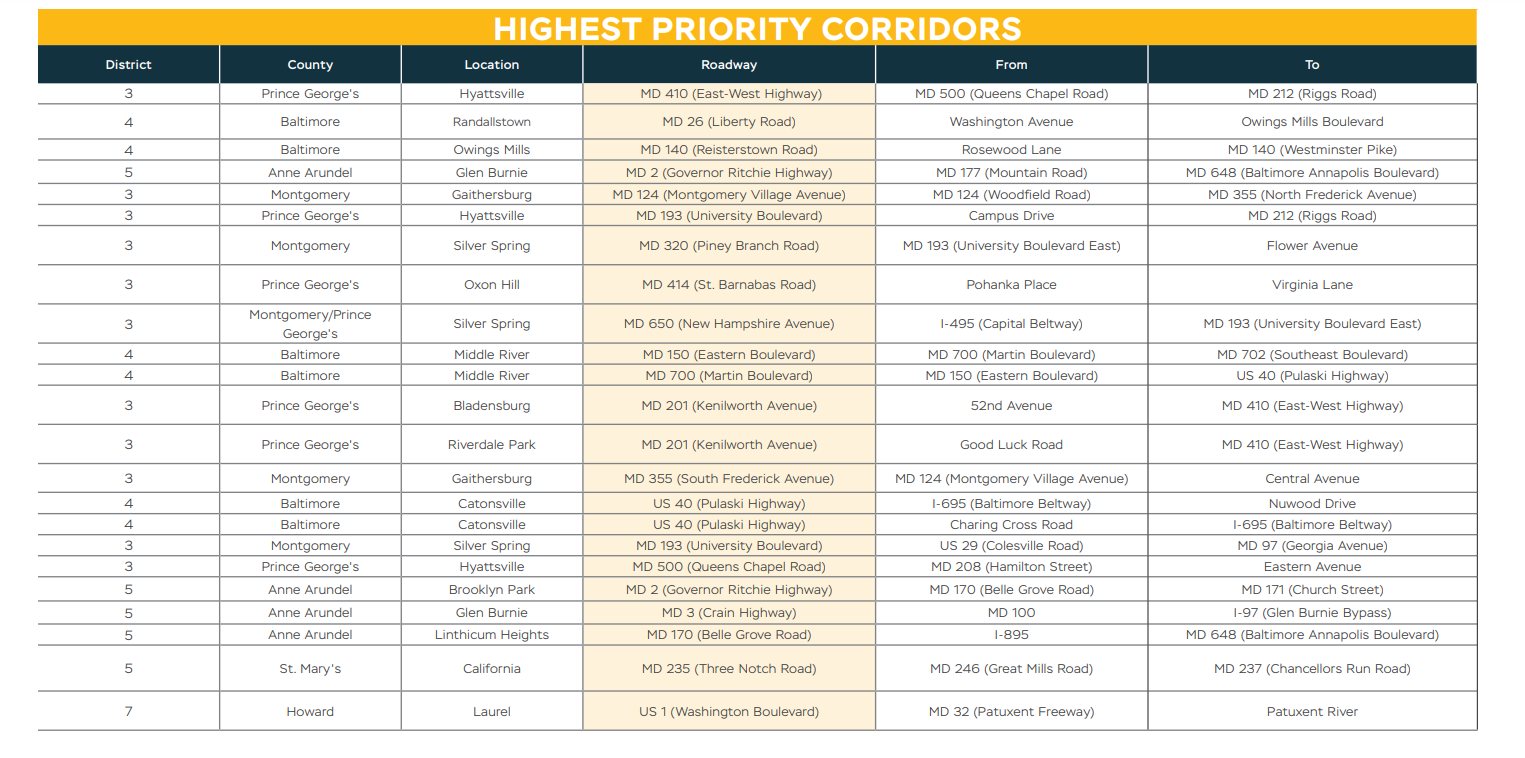Not far from where a pedestrian was struck and killed just hours earlier, the state of Maryland announced the next phase of its Pedestrian Safety Action Plan on Tuesday, vowing to make changes that will make five sections of state-maintained highways safer for people to walk and bike through.
Those five stretches of road are among more than 20 that state transportation leaders know need to be addressed. They include a stretch of New Hampshire Avenue/MD Route 650 from Powder Mill Road down to University Boulevard, and a stretch of East-West Highway/MD Route 410, running through Hyattsville.

“We are currently heading in the wrong direction,” said Joe McAndrew, Maryland Department of Transportation assistant secretary for planning and project development. “We could see more than 600 roadway fatalities by the end of this year. That’s a number that we haven’t seen since 2007.”
McAndrew said the transportation department has already seen more pedestrians and bicyclists killed in crashes this year compared to last year’s records, adding, “These are numbers that we do not like to see.”
Other state highways slated for this first phase of action are a stretch of Route 1 in the Laurel-Savage area of Howard County, between Route 32 and the Patuxent River; a stretch of Route 2/Ritchie Highway in Glen Burnie; and a stretch of Route 150/Eastern Avenue in eastern Baltimore County.
The state said these are among the most important and time-sensitive projects at the moment, and design work on those roads will begin in the coming months. The current expectation is that Route 410, running from Queens Chapel Road to Riggs Road, will be modified and improved by the end of 2026.
It’s not a one-size-fits-all approach, but the long-term changes to the road could include anything from lower speed limits to narrower traffic lanes, said Joe Moges, senior safety officer for Maryland State Highway Administration.
Other possibilities include a ban on right turns on red or fewer places to make left-hand turns, as well as sidewalk and crosswalk upgrades and bike signals.
“The goal will be to ultimately move forward with all 23 corridors, and the State Highway Administration is evaluating interim improvements that can be deployed in the remaining corridors,” Moges said.
McAndrew added, “It’s imperative that we put the ‘action’ in the Pedestrian Safety Action Plan and show that vulnerable roadway users have what they need to be safe as they travel about the transportation system.”








